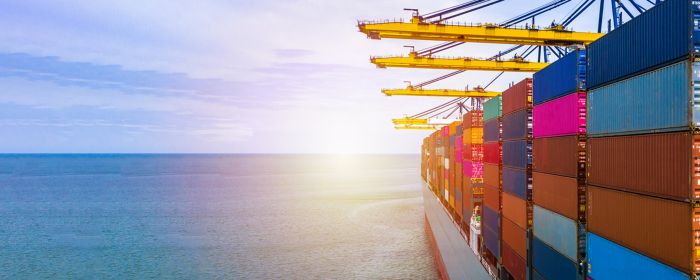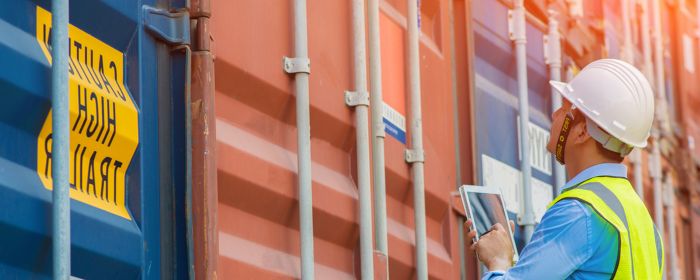With new declarations and government IT systems at the UK side of the border since 1 January 22 (Brexit 2.0 as we call it), it is now more important than ever to consider reducing complexity, tightening controls and ensuring compliance obligations are met. We talk about how to prepare for audits conducted by customs authorities, successfully dealing with any potential risks prior to the audit and how best to manage these going forward.
Self-filing of import/export declarations is a hot topic at the moment and will support businesses in managing compliance obligations in-house, in an automated fashion – It is all about ensuring that the business has full control over what is being legally declared and that it is, first and foremost, accurate. Automation can also deliver a smoother a speedier process at the border and beyond.
The alliance between the customs teams in KPMG UK and Belgium and our customs technology partner C4T provides our clients with an unbeatable set of skills to help them flourish during these changing times, with a focus on processes that go beyond compliance and add value to their businesses.
If you would like to discuss how we can help you prepare or to have a demonstration of C4T’s CAS solution, please do let us know.
Relive the webinar
‘Brexit 2.0 – What’s your problem?' hosted Tuesday, February 1st
During this webinar we provided insights on the following topics:
- Brexit 2.0 – What happened?
- Self-Filing
- CAS and Automation
If you missed the webinar or would like to revisit it, we invite you to watch the recording and download the slides.
Watch the recording
Please select your preferred topic by clicking on the corresponding video. Should you have any further questions or comments, do not hesitate to reach out to our experts.
Q & A
The UK Transit Manual Supplement (published by HMRC) says; The process for moving goods under Transit will be the same as for moving goods under the pre-lodgement model, except that the MRN which forms the Goods Movement Reference (GMR) will be generated from the Transit Accompanying Document (TAD) rather than CHIEF. The paper TAD must still travel with the goods.
Hauliers will be required to submit their Transit Movement Reference Numbers (MRNs) and vehicle registration or trailer/container registrations (VRN or TRN/CRN) for unaccompanied movements via the GVMS before checking in at the port of departure.
This information will be entered into NCTS during the crossing to the UK and the person in control of the goods will be notified if they are clear to proceed on their journey or require customs control. If being controlled, the haulier must present the goods and TAD where instructed.
The goods would then continue inland to be delivered to the office of destination or authorised consignee’s premises or continue their journey to the next CTC contracting party where another Office of Transit will be carried out - However, you should check whether the UK port of arrival uses GVMS for this purpose.
If the UK port is using GVMS for imports, the TIR refernce is used to gain a GMR.
In general you need to review a) whether your production process is more than "insufficient" and b) check whether you meet the product specific rule for your particular heading within the UK/EU Trade and Cooperation Agreement (if the movement is UK to EU or EU to UK) - you then need to ensure you have the audit trail of information to confirm this and provide a "statement on origin" as detailed in the TCA. The Product Specific Rule for 87.08 is CTH or MaxNOM 50 % (EXW).
This is a regular occurance where there is more than one party involved in the import process. It's important that you put instructions in place to ensure that what is being is declared is correct. If both parties are using the correct information, then this shouldn't, in theory throw up any issues. Destination is the port inventory system provided by MCP.
There is a requirement that a "warehouse to warehouse" declaration is made by the sending warehouse and a receipt by the receiving warehouse - please look at CPC 71 71 000 in the UK Tariff.
Although moving vehicles temporarily across the UK/EU border tends to be actioned by Temporary Admission by Conduct (essentially driving through the red channel) - Carnets appear to be the easiest way to move professional equipment temporarily.
In general terms, the ENS dec is the responsibility of the shipper. In particular, with NI (where TSS is used) the ENS triggers the beginning of the declaration procedure (frontier dec) followed up by supplementary declaration. Couriers have an easement which says that if dispatching certain parcels, you dont need to submit a customs declaration at all. This could be being used - you should ask this question to your couriers. ENS is the responsibility of the shipper. Please see https://www.gov.uk/guidance/sending-parcels-between-great-britain-and-northern-ireland#temporary-arrangements-for-moving-goods-from-great-britain-to-northern-ireland.
The short answer is yes. Although PPT will impact some importers, the control of it in the UK is inland and via returns - currently, there appear to be no PPT specific data elements required within UK import declarations.
In the UK (and many EU member states), there is a requirement that the importer must be the owner of the goods so that they can recover the import VAT (whether it is actually paid or postponed accounting is used). If the products are being repaired for example - it is possible to utilise Inward Processing but you may need to apply for it in advance. The TCA has a clause covering repairs.
You need to consider whether bringing customs compliance in-house is key for your business. Instructions to agents, post-import audits, MSS reviews, etc should all form part of your customs compliance programme. This will be dependant on the volumes you are importing/exporting.
You need to review the agreement in question, and look at the heirarchical process of the rules of origin i.e. Is the product wholly obtained, is any production more than insufficient, do you meet the 4 digit commodity code product specific rule - all this has to be done before you can issue a certificate of origin.
As importer, you will need to have a level of due diligence in place to demonstrate that you have considered the rules.
The words required are in the TCA (if in respect of UK/EU trade) but you will also need to consider the rules.
There isn't a technical fix - it's about transporting consolidataed shipments - if one of the shipments has a pre lodged customs declaration submitted that can "fool" GVMS. The GVMS sytem will not know that there are other separate shipments on the transport, but the likelihood is that the authorities will begin physical checks rather than a technical fix.
If GMR is provided by GVMS, it means that you have provided what is required to generate the GMR. CAS can manage all of this.
Yes, we can support with a cost vs. benefit analysis should this be something your business is considering.
No, you will still need to obtain the certificates via the Gov. Gateway but the system does allow for prompts if such a document is required and no reference is provided where required.
In short, yes, for the majoirty of customs requirements these will be linked to the commodity code but there are a number of separate steps to be taken.
The answer to this question depends on the level of automation used within the process.
DDP sales bring up the need to have an EORI number in the EU and have a VAT registration - some member states require fiscal representation.
Answers will only appear in CAS if the request was launched via CAS. If the GMR was requested via another system, only that system will receive responses.
Yes, customs specialists are a rare gem, but KPMG can offer all of the training for staff and we have helped businesses who have never imported in the past to set up a robust compliance programme and supporting team. In addition we can help you operate through our "VirtualCustoms Manager/Analyst" process.
Explore
Discover how KPMG Belgium, KPMG UK and C4T can help you with any trade or customs issue or sign up for our newsletters, to make sure you receive the latest insights and invitations to our webinars.




